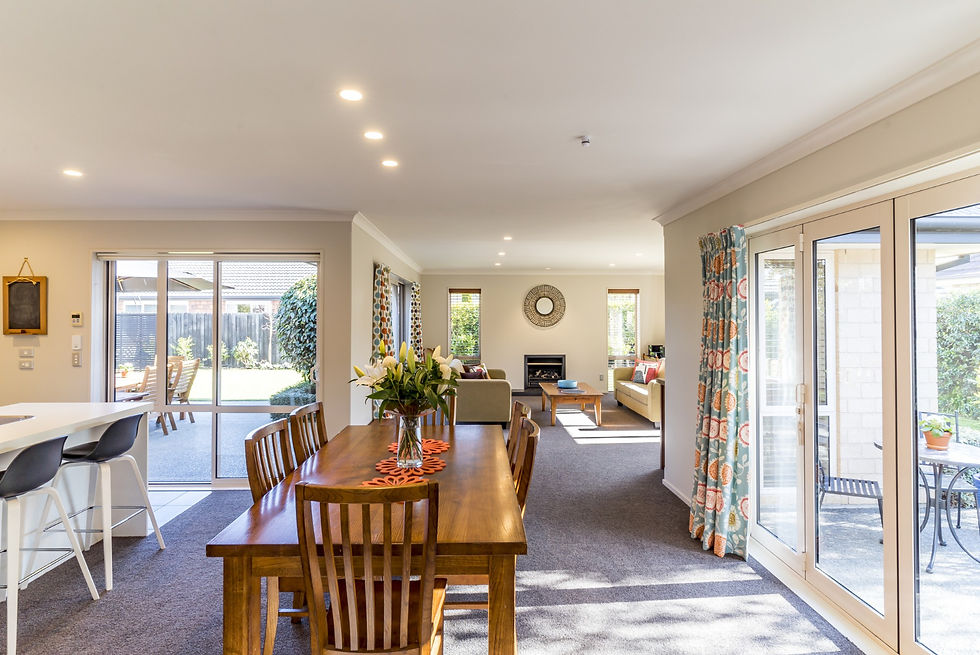How to Get Planning Permission for Your Home Extension
- torbabuilding
- Mar 27
- 4 min read

Planning a home extension can be exciting. It gives you more space, adds value, and improves your home's functionality. However, getting planning permission can be a challenge. Many homeowners are unsure about the process, the rules, and how long it takes.
This guide will help you understand everything you need to know. We've covered you by checking if you need permission to submit your application.
Do You Need Planning Permission?
Not all home extensions in Romford projects require planning permission. Some fall under "permitted development" rights. This means you can build without formal approval if you follow specific rules.
Understand Local Planning Rules
Each area has its regulations regarding home extension projects. Some neighbourhoods have restrictions on size, height, and design. You should:
Visit your local planning office's website.
Read the planning guidelines for residential extensions.
Look at past approvals in your area to see what is typically accepted.
Understanding these rules early can prevent delays or rejections.
Hire a Professional
A professional architect or planning consultant can help you:
Design your home extension to meet regulations.
Prepare the necessary documents for your application.
Address any concerns from the planning office.
While hiring an expert isn't mandatory, it increases your chances of approval.
Prepare a Strong Application
A well-prepared application speeds up the approval process. Your application should include:
Detailed plans – Provide accurate drawings of your project.
Supporting documents – Include design statements and environmental impact assessments if required.
Neighbour consultation – If possible, inform your neighbours beforehand to reduce objections.
Make sure everything is clear and professional to avoid delays.
Submit Your Application
Once your documents are ready, submit your application to the local planning authority. You can do this online. After submission:
The council will review your proposal.
A public notice may be posted to inform neighbours.
A decision is typically given within 8-12 weeks.
If approved, you can proceed with your home extension. If denied, you can revise your plans and reapply.
Handle Objections
Neighbours or local authorities may object to your project. Common concerns include:
Loss of privacy
Reduced sunlight
Increased noise or disruption
To resolve objections, consider adjusting your design or discussing compromises with those affected. In some cases, mediation may help.
Consider an Appeal
If your home extension application is rejected, you can appeal. The appeal process may take longer, but you can:
Address the reasons for rejection.
Modify your plans based on feedback.
Submit a new application with improvements.
Appealing can be time-consuming, so ensure your revised plans align with planning regulations.
Follow Building Regulations
Planning permission is just one step. You must also comply with building regulations, which ensure safety and quality. These cover:
Structural integrity
Fire safety
Energy efficiency
Drainage and ventilation
Failing to meet these standards can result in fines or project delays.
When You Don't Need Permission
The extension is a single-story and within a specific size.
It doesn't cover more than half of your land.
The height doesn't exceed the original house.
Materials match the existing home.
The extension doesn't face a highway.
When You Do Need Permission
You're extending beyond the permitted development limits.
You're adding a second story.
The extension affects a listed building.
The home is in a conservation area.
Check with your local planning authority (LPA) to confirm whether you need permission.
Steps to Get Planning Permission
1. Research Local Regulations
Each area has different planning rules. Visit your LPA's website to see their guidelines for home extension projects. Understanding these early can save time and money.
2. Consult an Architect or Planner
A professional can guide you through the design and planning process. They will ensure your plans meet legal requirements and increase your chances of approval.
3. Create a Detailed Plan
Your application must include:
Drawings of the proposed home extension.
Site location and block plans.
Design and access statements (for larger projects).
Structural calculations (if needed).
4. Talk to Your Neighbors
Planning authorities often consider the impact on neighbours. Informing them early and addressing concerns can prevent objections.
5. Submit Your Application
You can apply online through the Planning Portal or via your LPA. The application includes:
A form with project details.
Supporting documents (plans, statements, etc.).
An application fee (varies by project size and location).
6. Wait for the Decision
The review process typically takes 8-12 weeks. During this time:
The LPA will assess your application.
They may ask for modifications.
Neighbours and the public can comment.
A final decision will be made.
7. Receive and Review the Decision
If approved, you'll receive a planning permission notice. This may include conditions you must follow. If rejected, you can:
Revise and resubmit the application.
Appeal the Decision within 6 months.
Tips for a Successful Application
Follow regulations – Ensure your design meets all planning rules.
Be clear and detailed – Submit accurate plans and explanations.
Work with experts – Architects and planning consultants increase approval chances.
Engage the community – Address neighbour concerns early.
Plan for delays – Approval can take time, so apply early.
What Happens After Approval?
Once your home extension gets approval:
Notify your builder and contractors.
Adhere to any conditions set by the LPA.
Arrange building regulation inspections.
Start construction within the approved timeframe (usually within 3 years).
Conclusion
Getting planning permission for a home extensions in Romford may seem complex, but it's manageable with the right approach. Research local rules, create a solid plan, and work with professionals. Most importantly, submit a strong application to increase your chances of approval. With patience and preparation, you'll soon be on your way to creating the perfect home extension for your needs.

Comments